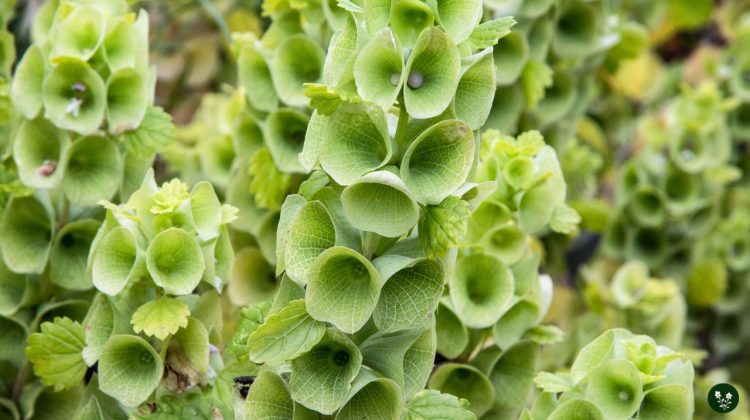
Bells of Ireland, also known as Moluccella laevis, is a beautiful summer-flowering annual native to Turkey, Syria, and the Caucasus.
It is cultivated for its spikes of flowers, surrounded by apple green calyces. The tiny white flowers are often fragrant and represent luck in the language of flowers.
Bells of Ireland is a popular cut flower often used in floral arrangements due to its unique and eye-catching appearance.
The green calyces on long, stringy stems make a stunning accent plant in a mixed garden bed. Whether you are a seasoned gardener or a beginner, growing Bells of Ireland is a rewarding experience that can add beauty and charm to any garden.
In this article, we'll cover
1. Bells of Ireland Origins and History
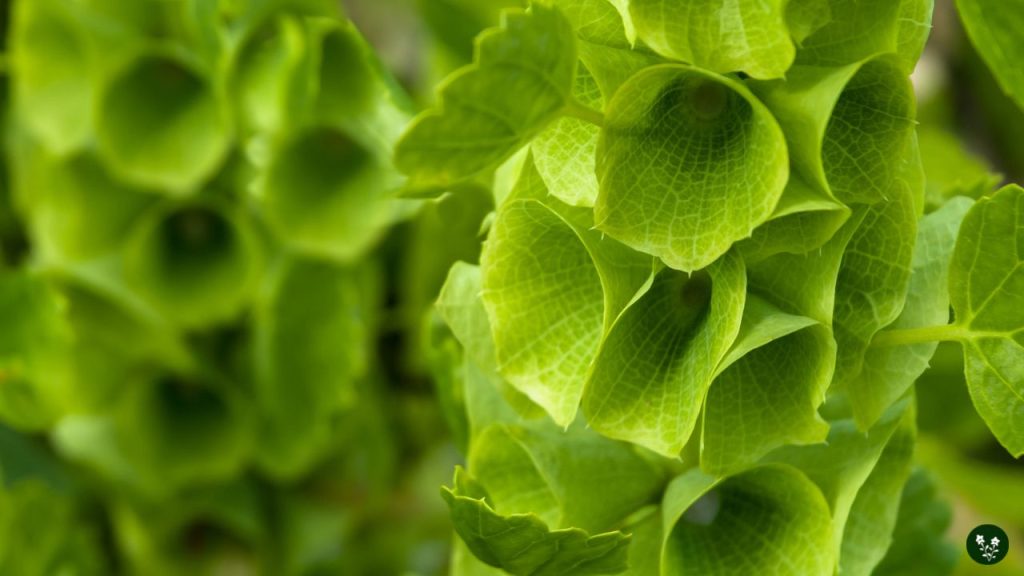
Bells of Ireland, also known as shell flower, is an annual plant in the mint family (Lamiaceae) native to western Asia, specifically Turkey, Syria, and the Caucasus. Despite its common name, it is not native to Ireland.
It is believed the plant was introduced to Europe in the early 16th century by the Flemish botanist Carolus Clusius. It quickly gained popularity due to its unique appearance and was soon cultivated in European gardens.
Today, Bells of Ireland is grown commercially in various parts of the world, including the United States. It is commonly used in floral arrangements and as a decorative garden plant.
2. Bells of Ireland Physical Characteristics
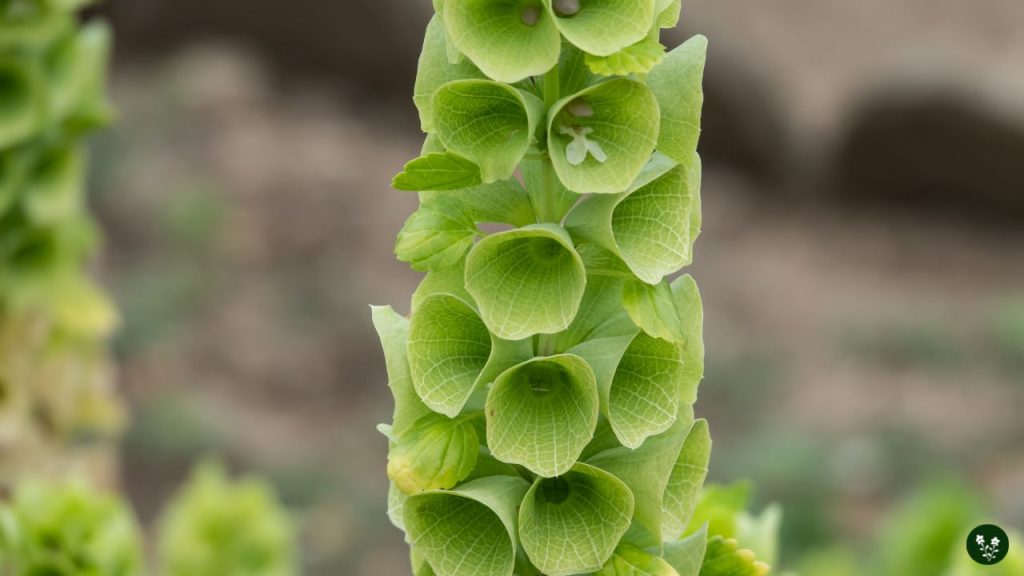
Appearance
Bells of Ireland, also known as shellflower, is an annual plant that typically grows up to 2-3 feet tall. Its distinctive appearance is green bell-shaped calyxes that grow on long, thin stems.
The plant’s true flowers are small, white, and often fragrant and grow inside the calyxes. The calyxes are the showy part of the plant and come in shades from pale to emerald green.
The leaves of Bells of Ireland are also distinctive, with deeply serrated edges and a bright green color. The plant prefers cool climates and typically produces its inflorescences in late summer.
Fragrance
Bells of Ireland has a mild, pleasant fragrance often described as fresh and grassy. The fragrance is most noticeable when the plant is in full bloom and can be enjoyed indoors and outdoors.
The fragrance of Bells of Ireland makes it a popular choice for cut flower arrangements, as it adds a subtle yet noticeable scent to any room.
3. Bells of Ireland Cultivation and Care
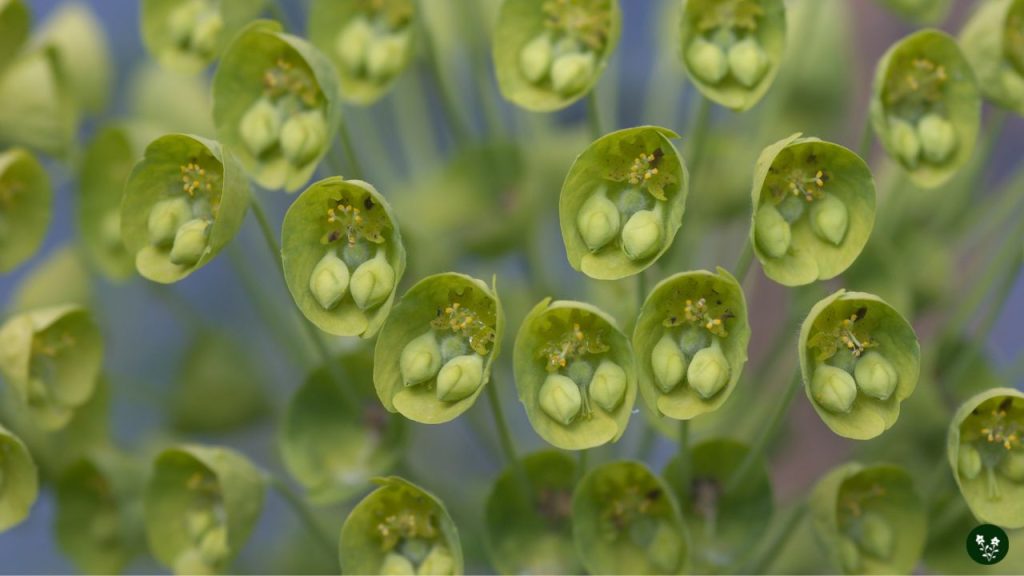
Planting
Bells of Ireland can be grown from seed or transplanted from nursery plants. For best results, plant in well-draining soil with a pH range of 6.0 to 7.5.
Choose a location that receives full sun to partial shade. Plant seeds or seedlings in early spring after the last frost date in your area.
When planting seeds, scatter them on top of the soil and gently press them down. Keep the soil moist until the seeds germinate, which can take up to three weeks.
Thin the seedlings 12 to 18 inches apart when they are a few inches tall.
Watering
Bells of Ireland prefer consistently moist soil but do not tolerate standing water. Water deeply once a week or more frequently during hot, dry weather. Avoid getting water on the leaves, which can lead to fungal diseases.
Fertilization
Bells of Ireland benefit from regular fertilization throughout the growing season. Use a balanced, water-soluble fertilizer every two weeks or a slow-release granular fertilizer at the beginning of the season.
Be sure to follow the manufacturer’s instructions for application rates.
Pruning
Bells of Ireland do not require pruning, but deadheading spent blooms can encourage additional flowering. Use clean, sharp scissors to snip off the spent blooms just above a set of leaves.
This can also help prevent the plant from self-seeding and becoming invasive.
Pests and Diseases
Bells of Ireland are generally resistant to pests and diseases but can be susceptible to fungal diseases in humid conditions.
Avoid overhead watering and provide good air circulation to prevent fungal growth. Common pests include aphids and spider mites, which can be controlled with insecticidal soap or neem oil.
4. Bells of Ireland Symbolism and Significance
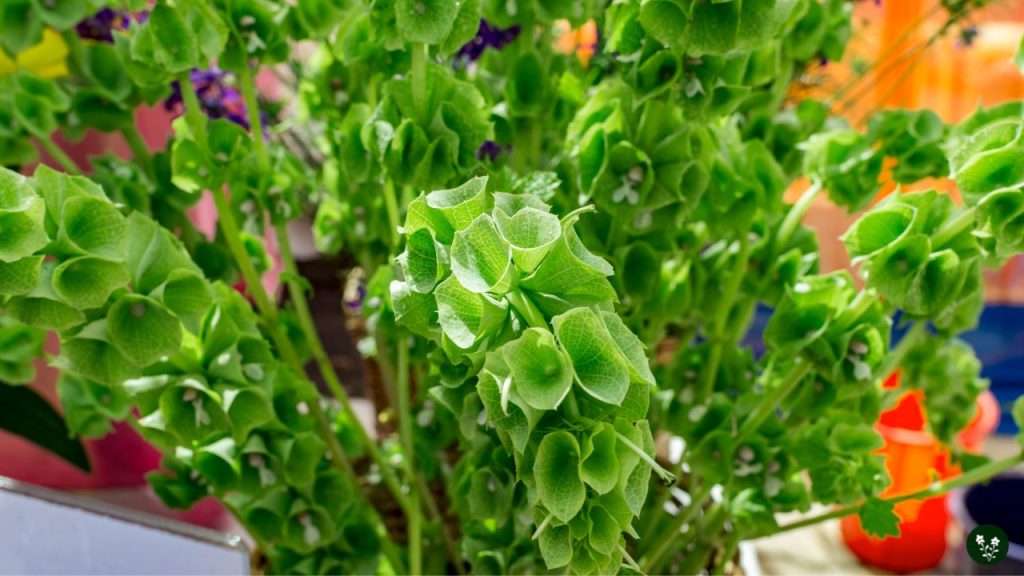
Bells of Ireland is a flower with a rich history and symbolism. The flower is known for its unique appearance and is widely regarded as a symbol of good luck and fortune.
The green color of the flower is reminiscent of the Emerald Isle and represents Irish charm and good luck.
The flower’s shape and blooms formally represent an Irish good luck charm, which makes it a popular flower for St. Patrick’s Day celebrations.
In addition to being a symbol of good luck, the Bells of Ireland are also regarded as a symbol of hope and rebirth.
The flower’s unique shape and appearance have also made it a popular choice for floral arrangements and bouquets.
Bells of Ireland are often used in wedding arrangements and are a popular choice for bridal bouquets due to their elegant appearance and symbolism.
5. Bells of Ireland Uses
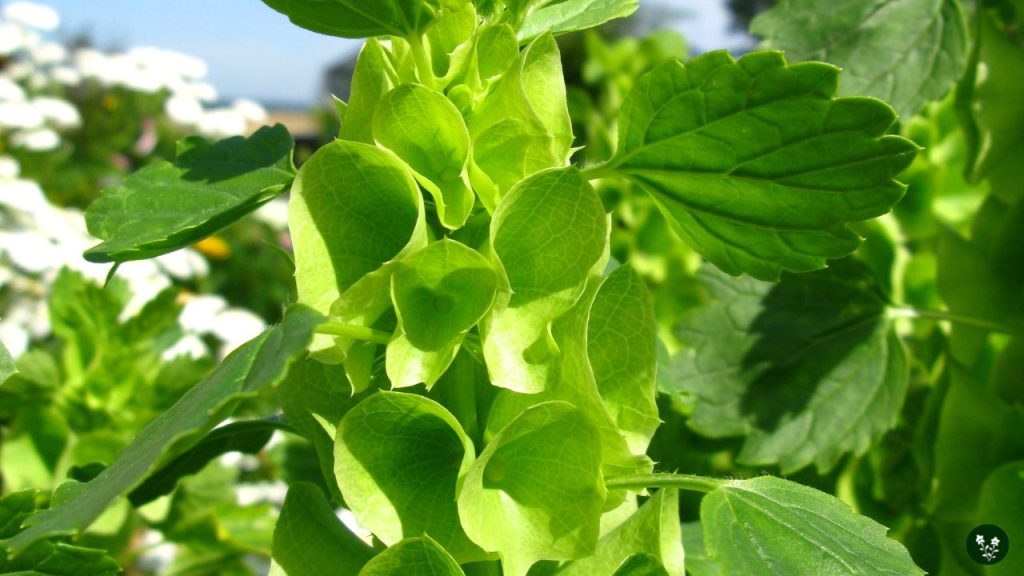
Bells of Ireland have different uses and purposes. In addition to being magnificent garden plants, they work beautifully in a vase or as a dried flower.
They have a unique appearance that adds interest and texture to floral arrangements. Bells of Ireland have a long vase life and can last up to two weeks when properly cared for.
Floral Arrangements
Bells of Ireland are a popular choice for floral arrangements. They add height and texture to bouquets and centerpieces. They are especially effective when used in all-foliage and contemporary arrangements.
Bells of Ireland can be paired with various flowers, including roses, sunflowers, and dahlias. They also look stunning when arranged with other greenery, such as eucalyptus and ferns.
Culinary Applications
Bells of Ireland are not commonly used in cooking, but they are edible and have a mild, sweet flavor. They can be added to salads or used as garnish.
The leaves and flowers can also be used to make a tea that is said to have a calming effect.
Medicinal Properties
Bells of Ireland have been used for their medicinal properties for centuries.
The plant is believed to have antibacterial and antifungal properties and has been used to treat various ailments, including respiratory infections and digestive issues.
However, there is limited scientific research to support these claims, and it is important to consult a healthcare professional before using Bells of Ireland for medicinal purposes.
Conclusion
Bells of Ireland flowers are unique and beautiful plants that can add a whimsical touch to any garden or bouquet. They are relatively easy to grow and maintain, making them a great choice for experienced and novice gardeners.
These plants are known for their tall, green stems and small white flowers hidden within the green calyxes.
They are often used in floral arrangements to add height and texture, and their unique appearance makes them a popular choice for weddings and other special events.
If you’re interested in growing Bells of Ireland, plant them in well-draining soil and provide them with plenty of sunlight.
They are relatively low-maintenance plants but require regular watering and occasional fertilization.
Overall, Bells of Ireland are a great choice for anyone looking to add unique and whimsical flair to their garden or floral arrangements.
With their tall green stems and hidden white flowers, they will surely be a conversation starter and a favorite among gardeners and flower enthusiasts alike.
Explore the beauty and symbolism of flowers:
How and when can you harvest the flower to use it dried in a bouquet?
To harvest Bells of Ireland for drying, cut the stems when the flowers are fully open but before they turn brown, typically in late summer. Hang the stems upside down in a warm, dry, well-ventilated area out of direct sunlight to preserve their color and shape.